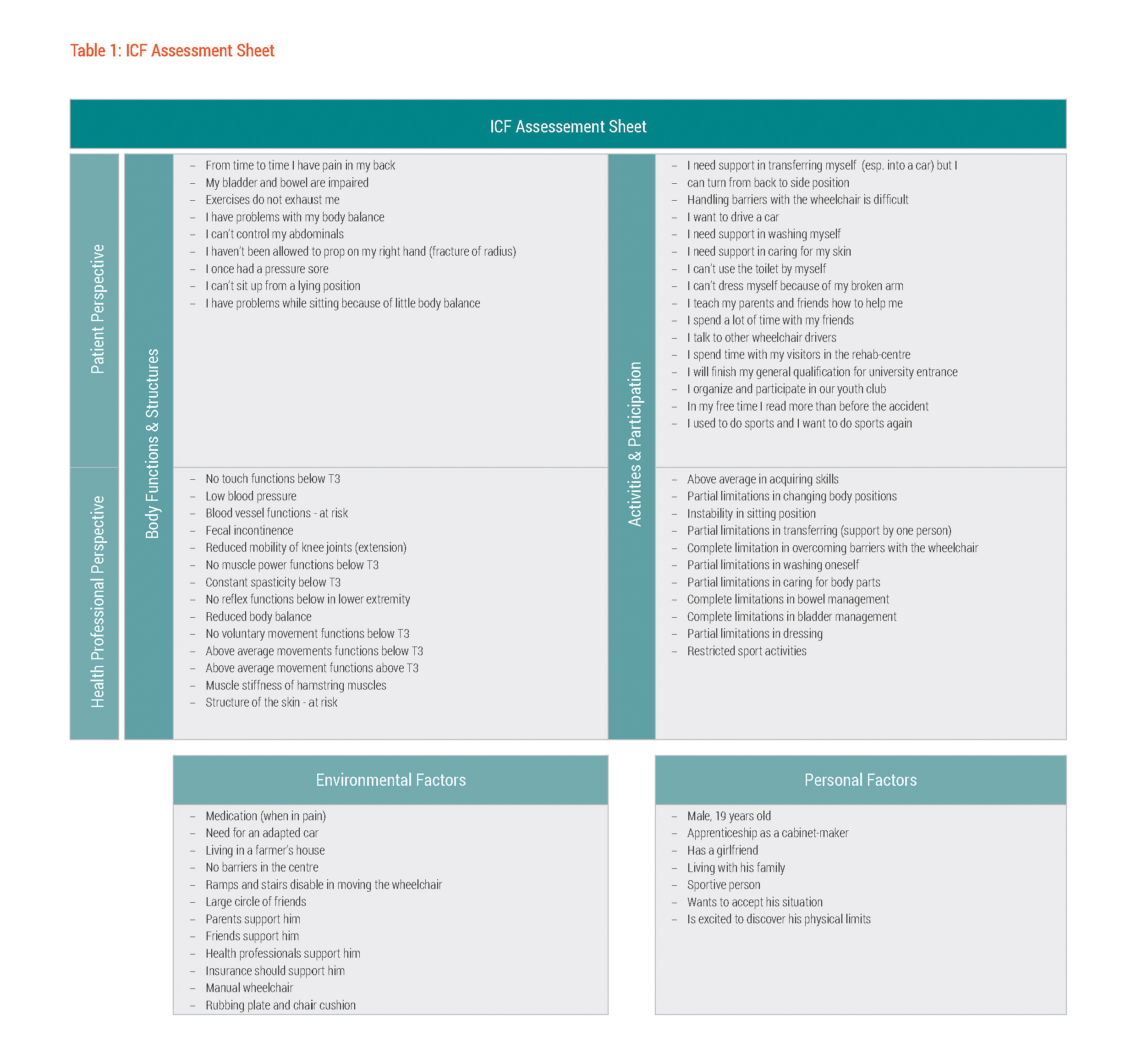Assessment

The Patient and Health Professional Perspectives
While limitations in these areas were normal for his injury level, Michael understood that they undermined his ability to act and live on his own. Clearly, these limitations greatly contrasted to his previous state and athletic physical abilities.These problems were further compounded by his broken arm, a condition that led to a delay in the rehabilitation necessary to increase his independence. His body function problems were within the normal range of expectations for his condition. Notable was Michael’s perspective on his participation in social and community life; it underscored Michael's forward-thinking attitude and drive towards addressing his new limitations. It also served as a source of his available and potential resources. For instance, his desire to attend university, participate in sports and socialize were important underlying motivational factors.
Michael's perspective on all aspects of his functioning are outlined in table 1, the ICF Assessment Sheet, a comprehensive overview of the a person's functioning state by presenting the assessment results in all the components of functioning, environmental and personal factors with input from both the health professional and the person/patient. The ICF Assessment Sheet can help his rehabilitation team to understand his functioning better and to identify the needs to be addressed in Michael's rehabilitation.
From the perspective of the rehabilitation team, there were a number of elements in each of the groupings seen on table 1 that were considered by the team to be of particular importance for Michael to move forward in the Rehab-Cycle®. Of special relevance were his environmental and personal factors, many of which acted as resources and facilitators for his rehabilitation. It was obvious to the rehabilitation team that Michael possessed quite a number of facilitating factors across different functioning components that could contribute to realistic goal-setting. These included, for instance, his living situation, coping strategies, motivation, athleticism, overall fitness and support of family and friends:
- With regard to personal factors, Michael's desire for independence and learning as well as his goal-oriented thinking and recognition of his limits all helped to inform and direct the rehabilitation goal-setting process. Additionally, his age and athleticism were important factors as well.
- In terms of functioning, Michael had an above-average ability to acquire new skills and exceptional movement above the level of T3.
- Also aspects of his environment, both physical (i.e. manual wheelchair, wheelchair-accessible health centre and health insurance coverage) and social (i.e. support from his parents, girlfriend, extended circle of friends and health professionals), facilitated the rehabilitation process.
It was understood that these resources and environmental factors could be harnessed by both Michael and his rehabilitation team, and that these factors would frame Michael's rehabilitation.

Table 1: ICF Assessment Sheet
For the final part of the assessment, the results of the clinical tests and examinations were matched with the corresponding values of the International Classification of Functioning, Disability and Health (ICF) qualifiers in order to generate an ICF functioning profile.